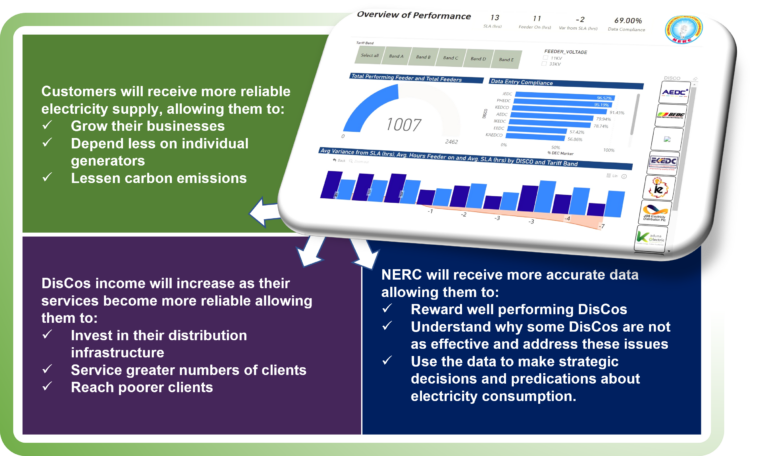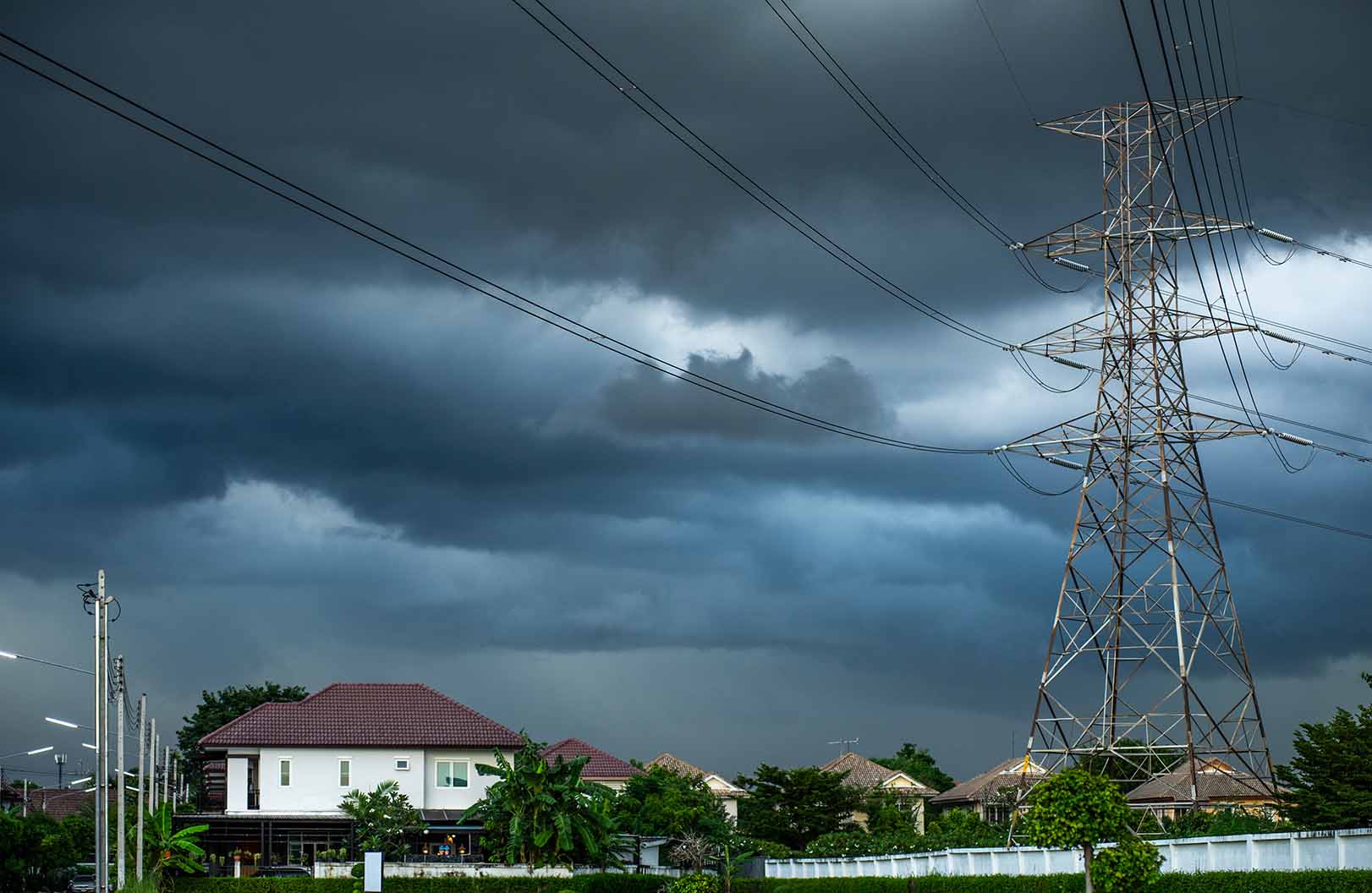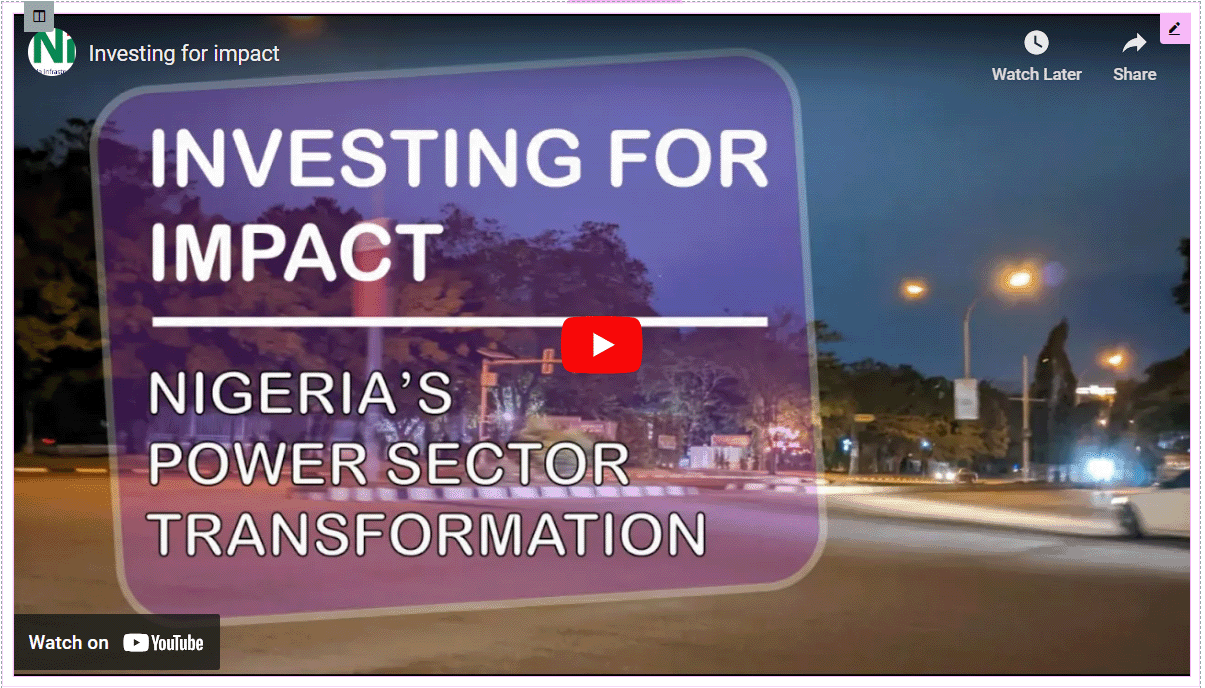A large portion of development work is focused on change; change in context, change in operations, change in behaviour. These changes don’t happen overnight, and in some cases, it can take a while to see results. But even small, incremental adjustments can be important early signs that positive change is happening.
In this series called “Stories of Change,” we share some examples of early indicators of change.
What happened?
In cooperation with the Nigerian Electricity Regulatory Commission (NERC) UKNIAF designed and delivered an interactive dashboard to providing daily emissions tracking data and real-time power distribution data from each of NERC’s eleven privatised Distribution Companies (DisCos).
Why does it matter?
Before the dashboard, NERC had no access to reliable real time data on DisCos’ distribution performance and could only partially perform its regulatory duties, including consumer protection.
The dashboard allows NERC to monitor DisCo performance and compare this to the delivery standards set out in the service-based tariff performance agreements. NERC can now take corrective action against underperforming DisCos and reward well performing DisCos.
With access real time data NERC can monitor and report on emissions in real time in accordance with the National Determined Contribution (NDC) requirements and it can use the data to make strategic decisions about electricity consumption.

Who benefits?
NERC is now able to monitor emissions in accordance with NDC requirements and perform its regulatory oversight of DisCos more effectively.
The DisCos can be held to account in terms of their service level agreements, helping them make effective decisions about infrastructure maintenance and expansion, improving their service delivery. Consumers and businesses will benefit by paying for more predictable electricity supply, and the poor will benefit significantly as this data will help NERC prevent selective power outages to areas where electricity costs are subsidised.
What did UKNIAF do that made the difference?
To enforce the service-based tariff performance agreements, NERC depended on DisCo-produced data and summary reports. NERC approached UKNIAF for assistance to resolve this issue, and in keeping with our demand-led facility model, we structured an innovative method with identified specific steps, or milestones.
UKNIAF had built trust with NERC through a series of prior engagements in which we supported the regulator. We assessed the quality of DisCo provided customer data and capacity and institutional gaps that impaired NERC’s regulatory ability. Working with various NERC departments, we explored existing monitoring processes, and engaged with internal and external stakeholders through workshops to design a solution. We reviewed the regulations supporting the service-based tariff performance agreements, and using dummy data, presented several iterations of the dashboard to users.
After piloting with a single DisCo, to better understand application challenges, we distributed the dashboard to all DisCos to gather baseline data and supplemented this with quality assurance checks, resulting in the first working version of the dashboard. We incorporated feedback into the second version, which was used to support capacity guiding sessions. We supplemented these sessions with a training video.
The intervention embedded transformational change within NERC. Subsequent requests to expand the dashboard to run data analytics and to support integration between it and other NERC data systems are guiding our current work.
UKNIAF’s intervention provided NERC with the facilities and capacity to assess both the amount and distribution timing of electricity DisCos transmitted into their distribution networks. This gave NERC the tools and data to monitor the service-based tariff performance agreements and to take necessary regulatory corrective actions where needed. The emissions tracking component allows NERC to report using reliable, and accurate data.
NERC had been working on these challenges for a year before approaching UKNIAF. Their approach was technically accurate but complex, and we approached the problem differently looking for a pragmatic, implementable solution. Initial designs based on paper-based data collection were replaced allowing for more efficient, seamless roll out. UKNIAF’s direct access to DisCos helped us develop a practical, workable result complimenting NERC’s request to move from the proposed pilot of one to include all DisCos, increasing scale even in the early stages. Further increases in scale resulted from a change in scope from the monitoring 11KV and some 33KV feeders to monitoring all 11KV and 33KV feeders.
The explanatory video was particularly well received, and NERC used it for information as well as for training, in some cases showing the video instead of calling for physical meetings improving efficient communication and implementation.
.

What lessons can we draw from this?
- Trusted relationships underpinned results:
Direct engagement with DisCos allowed us to complete the work quickly with practical responses, and demonstrated buy-in from our partner. - Iterative designs lead to a better product:
Our design process incorporated requests and suggestions, reinforcing stakeholder commitment and buy in to the overall solution. - Flexibility in scheduling is key:
We were able incorporate unforeseen requests and deliver beyond the initial design expectations. - Inclusive communications support stakeholder buy-in:
We supported a NERC led change management communication process, ensuring all stakeholders were kept abreast of progress.













